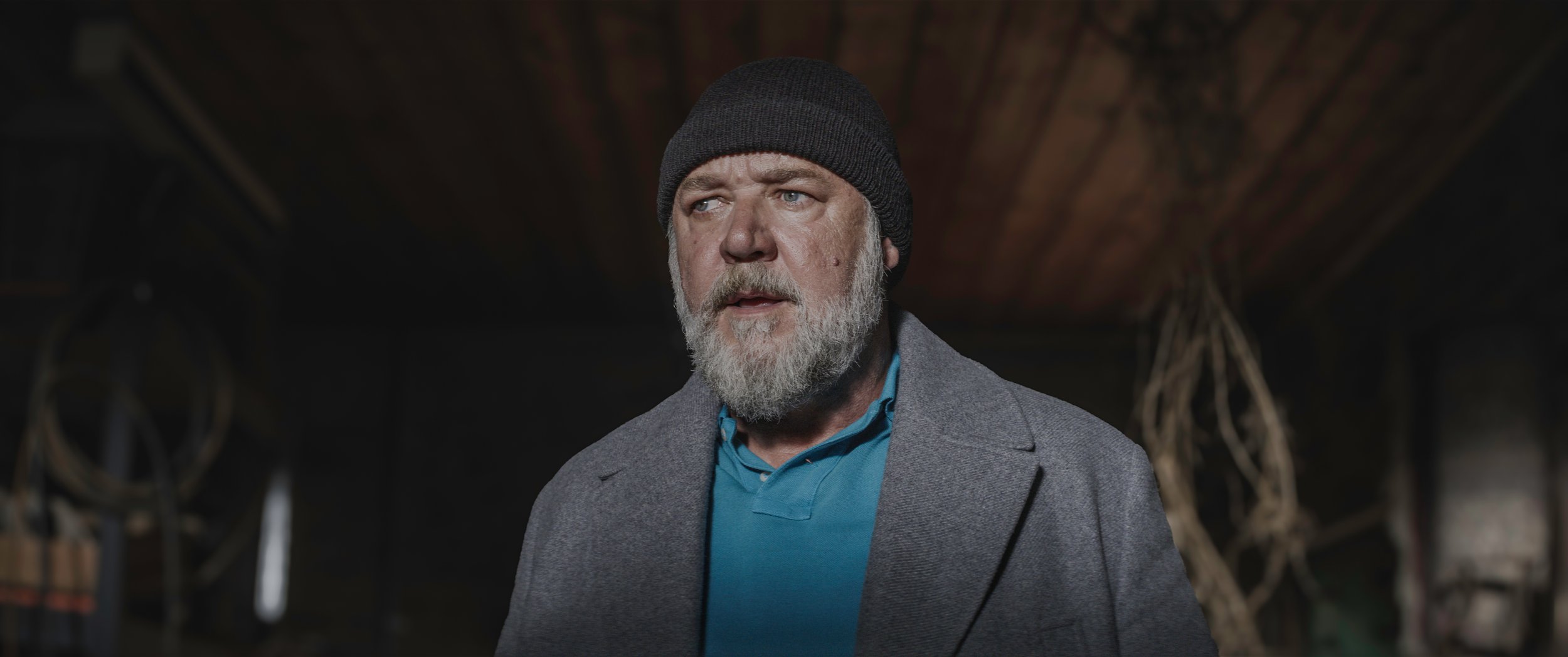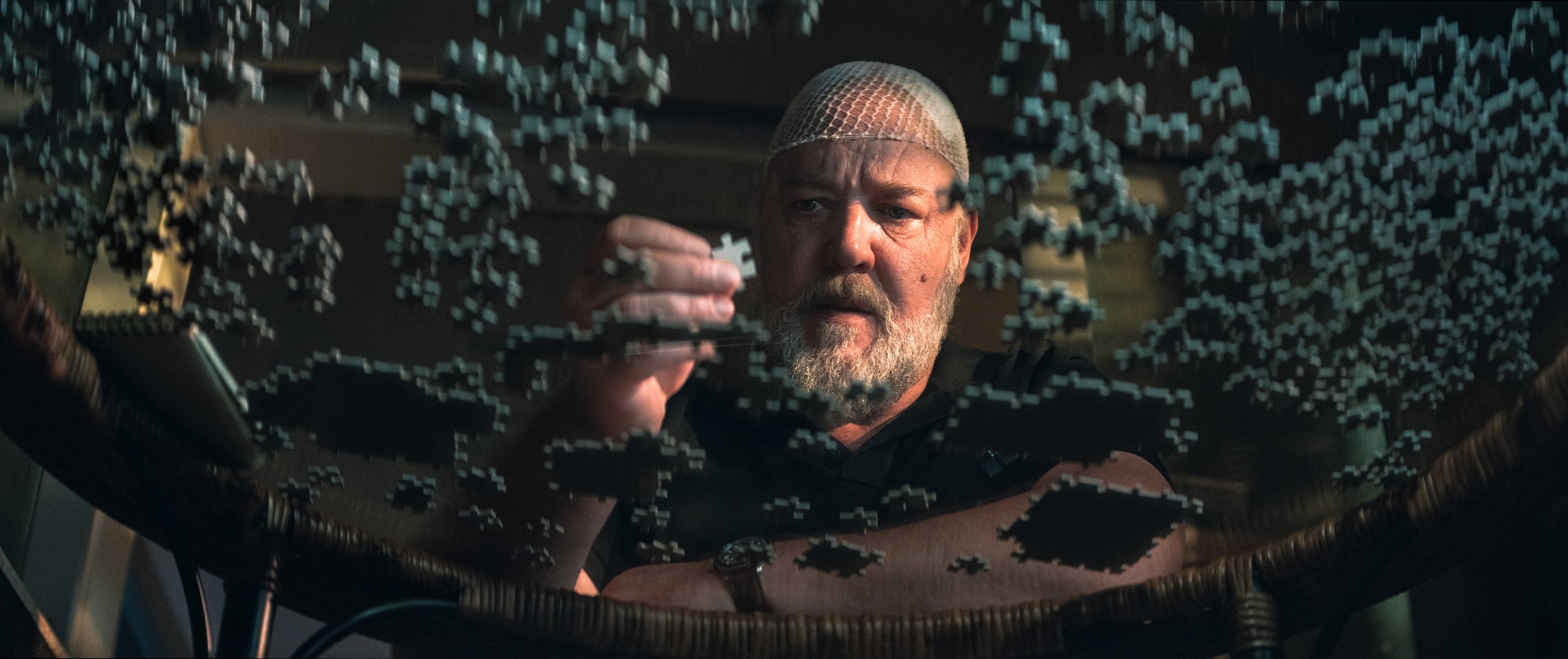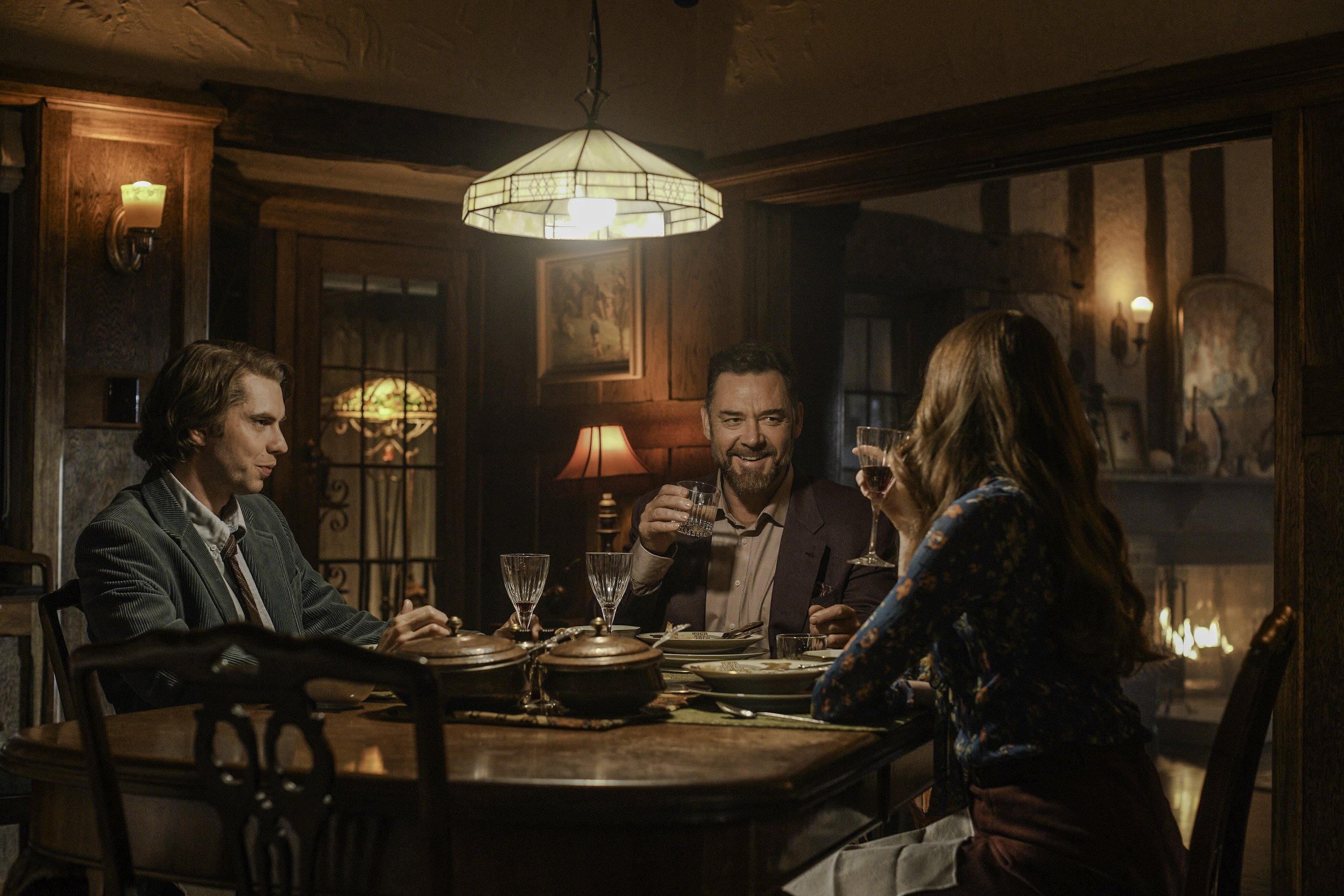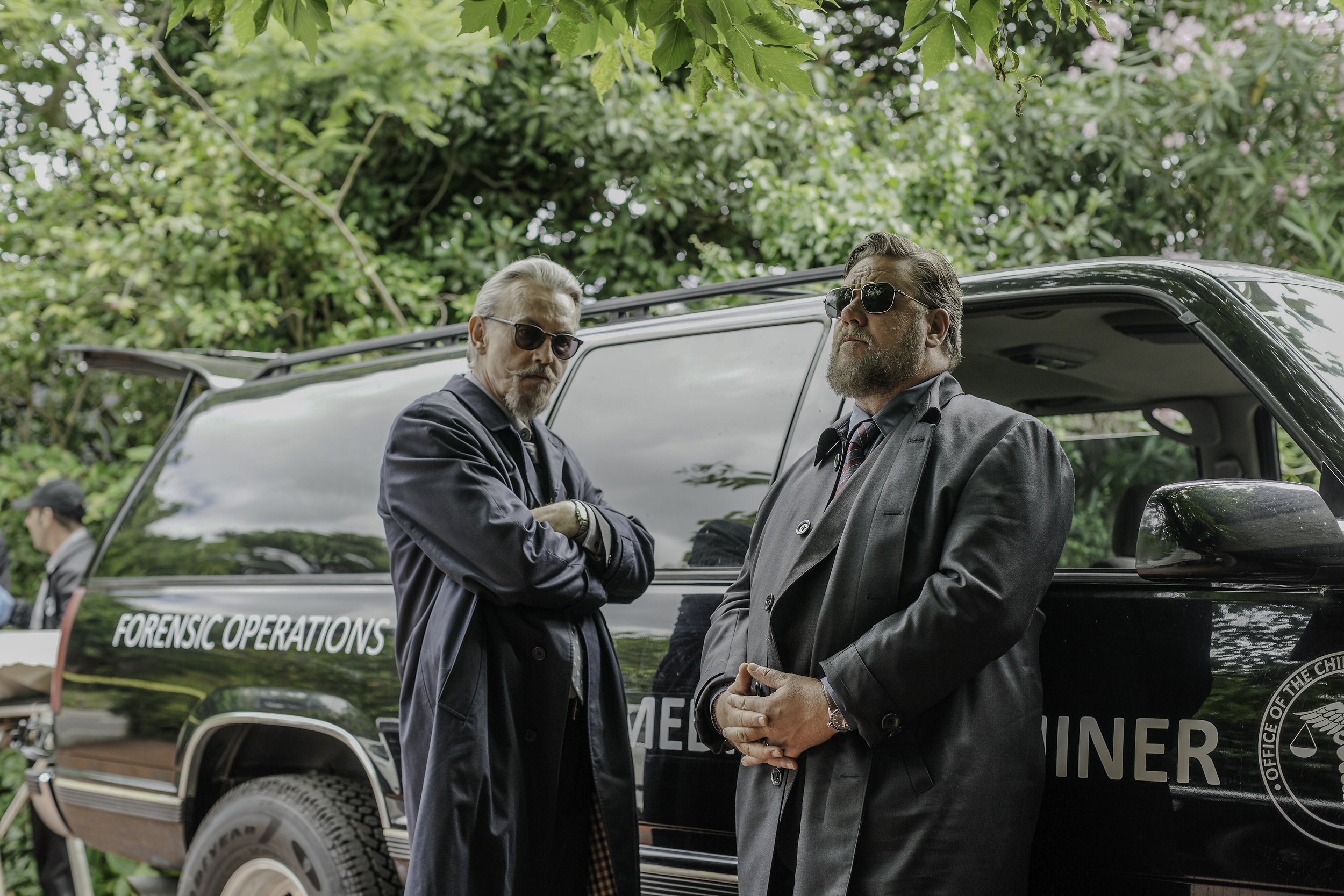MOVIE REVIEW: Sleeping Dogs
SLEEPING DOGS– 2 STARS
Sleeping Dogs is one of those murder mystery thrillers where motive construction and character placement is the whole kit and caboodle. Simply put, it’s one of those movies where every main and supporting character– and I mean everyone– looks guilty the majority of the time they are seen on-screen. To its credit, there’s a heightened mood created when there is such a deep pool of potential threats.
LESSON #1: QUESTIONING GUILT AND INNOCENCE– The murder at the center of Sleeping Dogs is one that has been dead and buried for ten years. Prominent local college professor Joseph Weider (Marton Csokas of The Equalizer) was found beaten to death via repeated blunt force trauma in his home. No murder weapon was found, but one of the teacher’s prized baseball bats was missing. The person who was apprehended at the scene, a lowly worker named Isaac Samuel (Pacharo Mzembe of TV’s La Brea), was documented confessing to the crime and, in the past decade, has moved up to the on-deck circle of death row.
LESSON #2: THERE’S ALWAYS A LOVER’S QUARREL– Isaac has long claimed his innocence, which sent fingers pointing to the other close people of Joseph Weider’s privileged circle at the time of his death. The two most intriguing figures there were his research partner Laura Baines (Guardian of the Galaxy franchise star Karen Gillan) and her jealous writer beau Richard Finn (Harry Greenwood of The Nightingale and Hacksaw Ridge). Baines has changed her name to Elizabeth Westlake since the murder as a means of reinventing herself, and Finn has recently turned up dead with an unpublished tell-all manuscript detailing the nefarious dream therapy studies of Weider and Baines.
Let’s stop and tally what Sleeping Dogs has so far as the Exodus: Gods and Kings and Assassin’s Creed writing partners Adam Cooper and Bill Collage (with Cooper debuting as director) unspool the dark source novel The Book of Mirrors written by Eugen O. Chirovici. There’s a conveniently-POC inmate on death row. The murder victim is played by a Professional Movie Villain in Martin Csokas, meaning there’s little chance he’s squeaky clean, and the one prominent female character so far is a beautiful woman manipulating others and evading a past chronicled by a suspiciously deceased jilted lover. Femme fatale and a wrongful death anyone? Yowzers! Oh, there’s more.
LESSON #3: WATCH OUT FOR THE PEOPLE BEHIND THE SCENES– As might be expected next, Baines and Weider’s unsanctioned work had its test subjects. One of those was the house handyman and war veteran Wayne Devereaux (actor/director Thomas M. Wright of The Stranger), who was trying to alleviate his PTSD. This visibly invisible anomaly of a man– shown finally speaking out while demonstrating a very adept and brutal skill set for butchering meat– was miraculously, as flashbacks show, always in the best eavesdropping location to the the loosest of loose ends and a walking testimony machine if anyone actually cared to ask him what happened before, during, and after that fateful night. Surely, he’s the smoking gun and silver bullet the law’s been waiting to find, right? Nope, not yet. Even that’s not enough for Sleeping Dogs.
LESSON #4: THERE’S ALWAYS A CROOKED COP– Activists and lawyers representing Issac Samuel have reached out to the two arresting officers to reexamine the case’s findings before his execution. Those cops were long-time detective partners Roy Freeman and Jimmy Remis, played by two-time Academy Award winner Russell Crowe and his old Gladiator buddy Tommy Flanagan. Samuel implores that his confession was forced, leaving us to wonder which one (or both) of these flatfoots is the less-than-straight-arrow policeman covering for the real killer. Add a heap of questionable evidence and Flanagan as one more Professional Movie Villain on the cast roster to the murky cauldron of Sleeping Dogs.
Eureka! Wait a second! All of these corporeal perils are pitted against the top-lining Russell Crowe? Say no more! He’s got this! Surely, all the double Oscar winner has to do is turn on his old, rugged gumshoe act from L.A. Confidential to speak low, stare holes through people locked in his gaze, and, if necessary, get a little physical to prove his points and extract his answers, right? Crowe gloriously does, which is worth the price of admission, but, alas, the pitfalls of a hard-nosed cop getting his man are not that easy in Sleeping Dogs. There’s one more confounding predicament that frames the entire film (and is an intentionally buried lede for this critique).
Roy Freeman, who was a raging alcoholic bounced from the force after a DUI, is suffering through the early stages of Alzheimer’s disease. He is receiving experimental electrode treatment, fitting Roy with head bandages and a fashion fixture beanie hat all movie. The aging Roy shuffles out an existence in his apartment where everything is labeled with scribbled tape-strip names and directions (a choice of prop work overkill from production designer Penelope Southgate). He visits Isaac Samuel in prison and is open to helping get the case right, but only has flickering memories of the incidents and the aforementioned participating players. Rolling with the whim of his doctor’s order to do something to stimulate his eroding mind, Freeman trades in doing tabletop puzzles for reopening this labyrinthine case off the books.
LESSON #5: WHERE’S THE FUN IF EVERYONE IS GUILTY?-- Everyone not named Russell Crowe is overacting in Sleeping Dogs to slither with every chess move. Each of the prime players get their tape-title chapter card in the film– including Roy himself with the fitting final reel– as tangents are untwisted. Strategically for Cooper and Collage, everyone is composed and placed the way they are in Roy’s path because they probably all are, in some way, culpable for the central crime. Moreover, they are also likely playing Roy’s memory against him to get away with it further… or are they?! Granted, there’s not always going to be a do-gooder or heroic protagonist with every committed crime, but where’s the fun if everyone is blameworthy or downright guilty?
That’s the trouble with Sleeping Dogs. The seedy 1990s movie feel is richly present and bolstered by a noir-ish score from Oscar nominee David Hirschfelder (Elizabeth), but not the equalizing justice. Without chosen favorites or glimmers of innocence to make audiences wonder and debate, those layers of scaffolded storytelling can become outstretched. For some thriller fans, the more crazy monkey wrenches the better for a plot like Sleeping Dogs leaning on a stalwart presence like Crowe.
On the other hand, once initially clever elements are over-extended beyond their credulity, the holes of convolution widen more than what already exists (like how the house of the crime scene is conveniently still abandoned and how no one figured this whole scheme out before this ten-year mark, but I digress). When everything is a question mark and very little is worth rooting for in Sleeping Dogs, the result can be, in the end, uninteresting. That’s even the case, if all the guilt is deservedly burnt to the ground before a bluntly positive retribution end credits song tries to squirt a coda chaser after your stiff drink of a movie.
LOGO DESIGNED BY MEENTS ILLUSTRATED (#1183)








